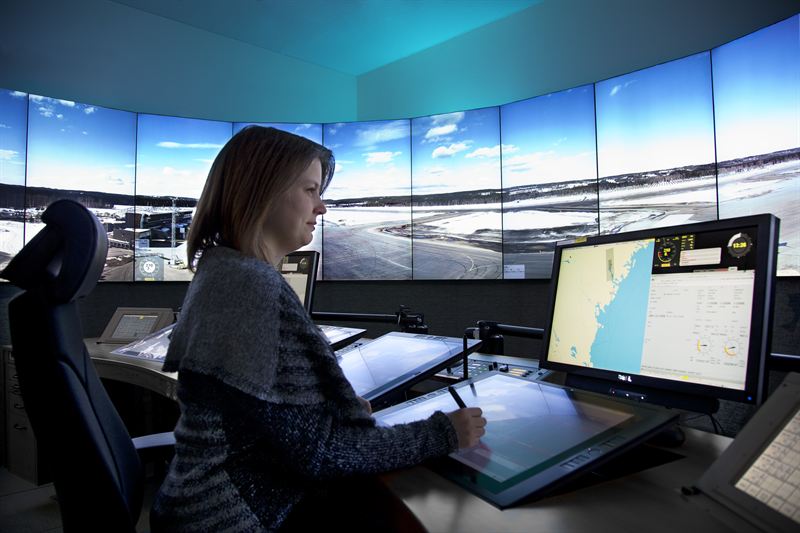LFV is breaking new ground for air traffic services

LFV has received clearance from the Swedish Transport Agency that the critical flight safety aspects of remote tower are clarified. With this decision, the concept of RTS, Remote Tower Services, enters a new phase that will result in commissioning later this year. Formal approval is expected later in the autumn.
“The decision of the Swedish Transport Agency is very welcome and proof that LFV has developed a safe solution for remote air traffic control. This is a whole new way of operating – performing Air traffic control and will mean a great deal to our clients and the entire industry,” says LFV's Director General Olle Sundin.
What started almost ten years ago as an idea and a vision of a paradigm shift in air traffic control, became reality through a close cooperation between LFV and Saab. LFV drew up and developed the operational concepts, while Saab developed the technical solutions.
“With remotely operated towers we will create totally new opportunities for aviation. Safety will improve and the airports can lower their running expenses and avoid the costly investments that would otherwise be necessary” says Olle Sundin.
Since 2012 the work with RTS is done in Sundsvall, where a remote control centre for remote air traffic control has been established. Örnsköldsvik and Sundsvall Airports have served as the trial aerodromes with great success, where aviation safety, high quality and development have been important keywords. The close collaboration with the airports and their management is one key factor for achieving this.
“Remote tower is an alternative to traditional air traffic services and it opens new opportunities for airports as Örnsköldsvik Airport ,” says airport manager Robert Gyllroth .
The basic idea is that a national approval could also become international in order to avoid time-consuming validation processes in every country where (RTS) remotely operated towers become established. Moreover, there is huge international interest in remotely operated towers. In December 2013, LFV and Saab organised a symposium in Stockholm and Sundsvall, attracting around 100 participants from 25 countries.
“The Swedish Transport Agency has monitored the entire process and development work in accordance with European safety regulations and standards with great interest. This was a decisive factor in proving the system and operational safety case,” says Olle Sundin.
Remotely operated towers – how do they work?
Remotely operated cameras and sensors are placed at the airport and everything they register is linked in real time to the air traffic control centre and projected in a 360 degree view. Air traffic control takes place via the control centre where controllers control and direct traffic.
The technology is now ready for live use in Sundsvall, where the remote control centre for RTS is located, and at Örnsköldsvik Airport. Örnsköldsvik will thereby be the first aerodrome in the world to be controlled remotely.
For more information and comments please contact LFV presservice +46 11 19 20 00. Images of remotely operated towers can be downloaded from lfv.se/en/Press/.
The LFV Group is a state enterprise with 1,200 employees that operates air navigation services for civil and military customers at 28 locations in Sweden. We have sales of over SEK 3 billion. LFV is one of Europe's leading actors in air navigation services. Our solutions for even safer and more cost-effective air navigation are being noticed, and in the area of environment we are at the forefront to minimize environmental impact. From July 2012, the joint company NUAC carries out the production of Air Traffic Services en route on behalf of its owners LFV and Danish Naviair.
Tags:


